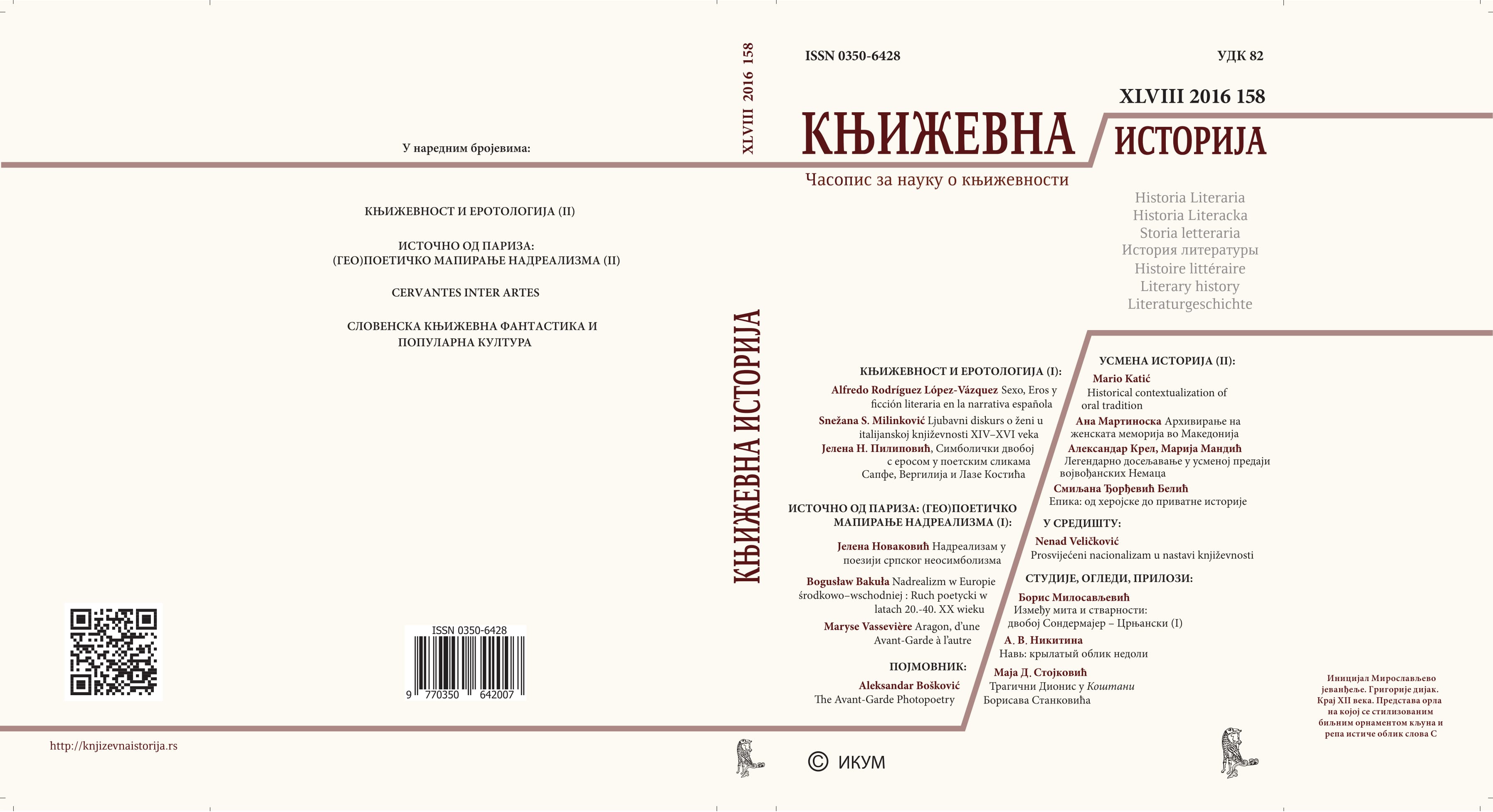Две силе. Симболички двобој с еросом у поетским сликама Сапфе, Вергилија и Лазе Костића
Two forces. Symbolical Duel with Eros in the Poetic Images by Sappho, Vergil and Laza Kostic
Author(s): Jelena N. PilipovićSubject(s): Studies of Literature, Theory of Literature
Published by: Институт за књижевност и уметност
Keywords: eros;erotology;poetic image;agonistics;symbol;metaphor;diachrony;
Summary/Abstract: Paper aims at establishing a fertile intertextual link between the poem Santa Maria della Salute by Serbian poet Laza Kostic, the Aeneid 4 by Virgil and the fragment 47 by Greek poetess Sappho. In spite of a huge cultural gap, these texts correspond closely on the level of an isolated symbol. In the three texts, the image of an oak plays a key-role in expressing a turbulent intrapsychical movement:this tree is given function of a symbolic antagonist to the forces of eros, transigured into a violent wind. his polysemous duel, however, difers substantially from Sappho to Kostic, leading towards the deeper divergences in the vision of love and human identity. In Sappho (Fr. 47.2), the oaks in the mountain, attacked by the wind, cannot be interpreted in any limiting manner: their polysemy covers the entire being of the poetical self. In Virgil, the irm, old oak (Aeneid 4. 439-446), attacked by “Boreas”, stands for the three strata of resistance to the erotic forces: the hero’s individual reason, the divine intervention and the omnipotent predestination. In Kostic (Santa Maria della Salute 49-56), the old oak is apparently identiied with the brain (mozak, vijugav mozak): however, the concrete context of the entire poem, as well as the complex intertextual echoes of Sappho and Virgil, help to reveal a much more profound and difracted symbolism.
Journal: Књижевна историја
- Issue Year: 48/2016
- Issue No: 158
- Page Range: 49-71
- Page Count: 23
- Language: Serbian

